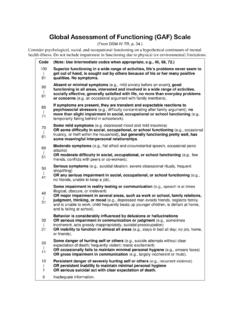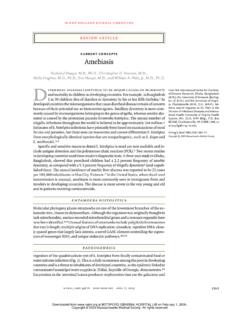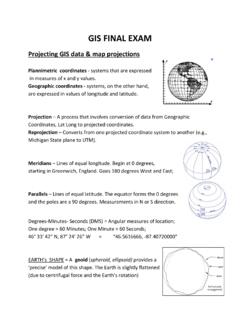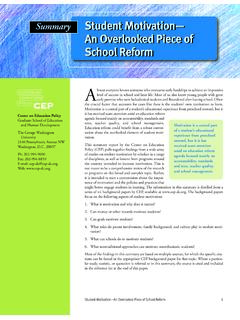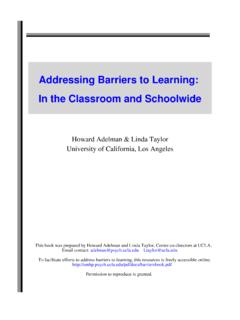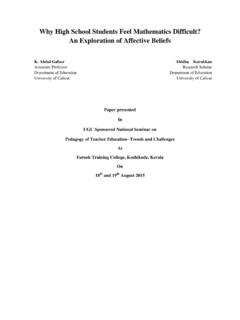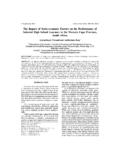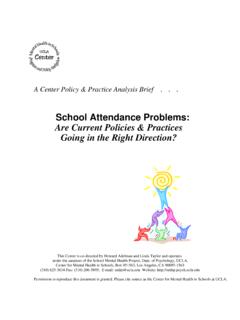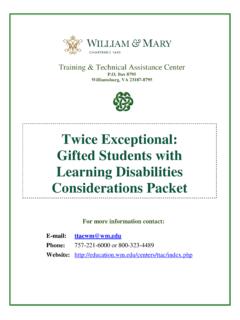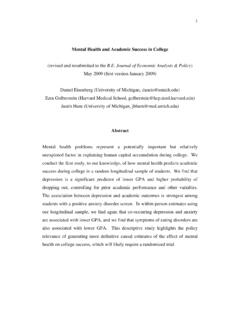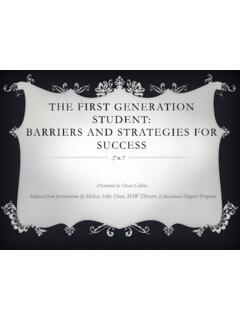Transcription of LITERATURE REVIEW: EFFECTIVENESS OF GAMING IN THE ...
1 LITERATURE review : EFFECTIVENESS OF GAMING IN THE CLASSROOM11 Running head: LITERATURE review : EFFECTIVENESS OF GAMING IN THE CLASSROOM LITERATURE review : EFFECTIVENESS of GAMING in the ClassroomKaren A. MilczynskiMichigan State University LITERATURE review : EFFECTIVENESS OF GAMING IN THE CLASSROOM11 IntroductionThe idea of using games to engage students in the process of active learning is not new. Over the past several years, educators have been increasingly incorporating various games into their teaching curriculum in an effort to create a fun and engaging learning environment for students . Although this can be very challenging and time consuming, interactive, collaborative and competitive games tend to motivate and encourage student participation in the learning process.
2 Over the years, the format for classroom games has changed drastically. There are many more options that incorporate the use of technology and interactivity. Quinn and Iverson argued that students need to be engaged more and to be put at the centre of the learning experience to change from passive vessel to active participant (as cited in Pannesse & Carlesi, 2007). In my classroom, I have conducted several games with my students as a means to review previously taught material and to prepare for tests. I have noticed that most of my students tend to enjoy hands-on activities in my courses; however, I wonder sometimes when we play games or do activities if they are grasping the content of the material in the process.
3 Some students appear to learn more when they are competing in a game or activity while others seem like they are bored or possibly distracted. As a whole, the feedback I have received from students regarding the benefits of the review games we play has been positive and many students suggest that we play them more often. Although I try to listen to my students feedback, I am reluctant to play review games more often because I have yet to document quantitative evidence that supports the EFFECTIVENESS of the review games we play. For my research, I am seeking learn more about the EFFECTIVENESS of the different test review methods I employ in my 12th grade Independent Living classes.
4 Additionally, in a LITERATURE review : EFFECTIVENESS OF GAMING IN THE CLASSROOM11more general approach I am seeking information that supports the question: What makes an educational game effective in the classroom? Nearly seventy percent of students learn best actively and visually (McLester, 2005). Because of this, I feel that there are many potential benefits of active learning through games in the There are many explanations as to what defines an educational game nowadays. While some games are competitive in nature, others may simply allow students to work together as a class to solve a general problem where no one wins or loses. In All Play and No Work, MacKenty (2006) states that, it s the act of problem solving that makes games so devoid of challenge or risk of failure, games really aren t all that much fun (p.)
5 46). On the contrary, Tom Schrand (2008) discusses the powerful capabilities of interactive multimedia games (or activities) where students work together as a class to categorize information in charts by moving facts so they rest in the appropriate labeled columns ( ). Revisiting these types of games and activities can help with reiterating important information for students . Schaller (2006) states that iteration, or repetition of the process, is critical to support the learning process by encouraging experimentation, hypothesis testing and synthesis which are all higher level thinking skills. Both formats of GAMING activities tend to show learning benefits because of the active learning components that are present in each (MacKenty, 2006, Schrand, 2008).
6 Games that bring out these higher level thinking skills are becoming more popular, although more research and scientific assessment is necessary to measure their overall EFFECTIVENESS since they are still relatively new. LITERATURE review : EFFECTIVENESS OF GAMING IN THE CLASSROOM11 Regardless of the format of the game, students can simultaneously build their problem solving skills while having fun throughout the process if an instructional game is well-designed (MacKenty, 2006, Harris, 2009). Throughout my research, I discovered that there are many GAMING formats that educators can choose from. There are many factors to consider including: 1) which game best integrates into the existing curriculum, (Harris, 2006, ) 2) which game meets the objectives of the topics being taught, (MacKenty, 2006, ) and 3) what are the instructor s personal beliefs on teaching pedagogy (Van De Bogart, 2009).
7 Depending on the type of game that is played, there are clear benefits to supplementing games as active learning components in the classroom. According to Franklin, Peat & Lewis (2003), when students work cooperatively on a GAMING activity, games foster group cooperation and typically create a high level of student involvement that makes them useful tools for effective teaching (p. 82). Of course, these positive approaches to educational games are not left uncontested by educators and scholars alike. In This Is Jeopardy!, Audrey Amrein-Beardsley states that, Methods of GAMING tests, (may) result in spurious test score gains unrelated to true gains in student learning (p. 14).
8 She explains that many teachers are simply teaching to the test with games and this causes students to become experts at answering (the) test questions without entirely understanding the concepts justifying their answers ( ). Furthermore, she argues that, These practices are replacing critical modes of instruction and inquiry-based, higher order, problem-solving activities and lesson we know increase genuine levels of learning ( ). Another argument that is made against educational games comes from Okan (2003) in Edutainment: Is Learning at Risk? Okan states that edutainment, involves active pedagogy and (this) totally depends on an obsessive insistence that learning is inevitably fun (p.)
9 255). This article questions whether or not learning should always have to be fun. One argument that LITERATURE review : EFFECTIVENESS OF GAMING IN THE CLASSROOM11is made to support how this could be negative because, ..meaningful learning may sometimes be difficult and requires cognitive and emotional especially in the light of the fact that post-secondary education is not usually a fun undertaking (p. 258). Finally, one last concern regarding educational games comes from a recent case study that focused on teachers adopting educational computer games. Kebritchi (2010) poses the concern that games are becoming such innovative learning tools that teachers may conclude that they don t need to lecture, and instead they may rely on the game and use it as a teaching replacement and not as a supplement (p.
10 263). It is important to remember that games are supplement teaching tools and teachers ultimately need to be actively involved for them to be truly effective. PedagogyThere are a variety of teaching methods that coincide with an active learning pedagogy. To understand what encompasses active learning, it s important to realize that it can be defined in many ways. One way active learning can be defined is, an effort to make learning authentic, (Van De Bogart, 2009). Additionally, it refers to techniques where students do more than simply listen to a lecture. students are doing something including discovering, processing and applying new information (Van De Bogart, 2009). Aside from previously mentioned non-competitive interactive multimedia activities, active learning can also include interactive simulation games which may or may not be computer based.





